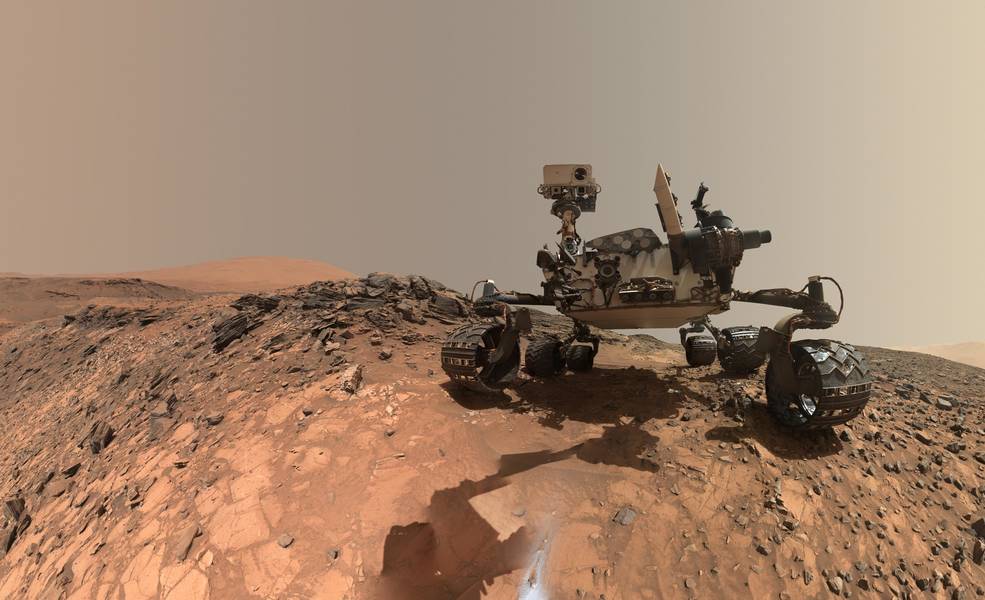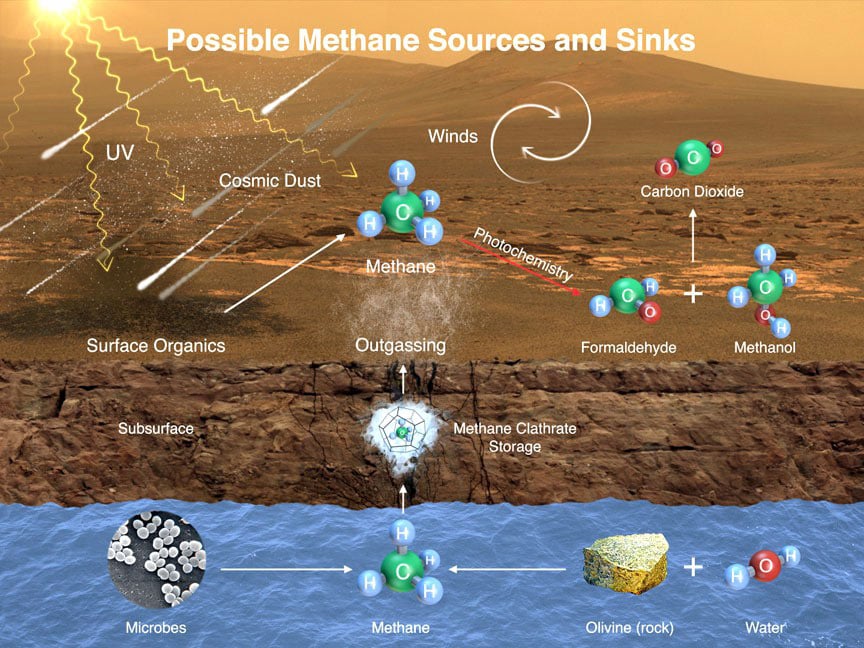Since it landed on Mars in 2012, one of the main scientific objectives of the Curiosity rover has been finding evidence of past (or even present) life on the Red Planet. In 2014, the rover may have accomplished this very thing when it detected a tenfold increase in atmospheric methane in its vicinity and found traces of complex organic molecules in drill samples while poking around in the Gale Crater.
About a year ago, Curiosity struck pay dirt again when it found organic molecules in three-billion-year-old sedimentary rocks located near the surface of lower Mount Sharp. But last week, the Curiosity rover made an even more profound discovery when it detected the largest amount of methane ever measured on the surface of Mars - about 21 parts per billion units by volume (ppbv).
The samples were taken from a spot designated as "Teal Ridge", an outcropping of layered bedrock that is part of the larger region known as the "clay-bearing unit". The rover has been on this ridge since mid-June in the hopes of characterizing the unusual feature, which is located in the middle of a sea of sand and pebbles.
The detection of methane was once again provided by the rover's Sample Analysis at Mars (SAM) tunable laser spectrometer. But before anyone gets too excited, it is important to note that scientists do not yet know what could be causing this methane. Such is the mystery of Martian methane, which could be the result of microbes beneath the surface, or because of interactions between rocks and water.
At present, both the cause of the methane and itstrue source remain unknown since Curiosity doesn't have the necessary instruments to answer these questions."With our current measurements, we have no way of telling if the methane source is biology or geology, or even ancient or modern," said Paul Mahaffy, the SAM Principal Investigator at NASA's Goddard Spaceflight Center.
Based on previous findings, scientists have found that atmospheric methane levels on Mars rise and fall seasonally. Sudden spikes in methane have also been observed, which appear to be unrelated to seasonal patterns and have unknown duration. To gather more information and determine if this latest detection was an example of plume activity, the SAM team organized a follow-up methane experiment.
The results of this experiment were received on Monday morning (June 24th) and showed that methane levels had decreased sharply to less than 1ppbv- which is close to the background levels regularly observed by Curiosity. These findings suggest that what was seen last week wasin facta transient methane plume.
While these findings have helped to characterize this latest detection of methane, they have not brought us any closer to discerning a pattern in the occurrence of transient plumes. As Ashwin Vasavada, Curiosity's project scientist at NASA's Jet Propulsion Laboratory, explained:
In the meantime, the Curiosity team will be analyzing the data obtained from these latest readings in the hope of gaining more clues to these questions. They will also be combining their results with other mission teams that have detected methane on Mars, including the ESA's *Trace Gas Orbiter*, which has been in orbit for over a year searching for signs of methane.
In addition, when the Mars 2020 rover lands on the Red Planet, it will be searching for sources of methane using an instrument known as SHERLOC - which stands for Scanning Habitable Environments with Raman and Luminescence for Organics and Chemicals. This ultraviolet Raman spectrometer will use fine-scale imaging and an ultraviolet (UV) laser to continue the search for organics.
By combining measurements obtained from the surface with those obtained from orbit, scientists hope to gain a better understanding of these plumes and where they originate from. Once that is done, we may finally be able to determine what the source of Mars' methane is, and whether or not it is an indication of past or present life!
*Further Reading: NASA*
 Universe Today
Universe Today


